Which Water Bottle Materials Are BPA-Free? A Guide for Buyers and Brand Retailers
When sourcing water bottles for your business, ensuring product safety and quality is essential. One of the key factors modern buyers consider is whether a bottle is BPA-free. But what exactly is BPA, and why does it matter?
Table of Contents
ToggleWhat Is BPA?
BPA (Bisphenol A) is an industrial chemical used in the production of certain plastics and resins, particularly polycarbonate plastics. These materials were once widely used in food and beverage containers due to their durability and clarity. However, research has shown that BPA can leach into liquids, especially when containers are exposed to heat, raising concerns about its potential health risks.
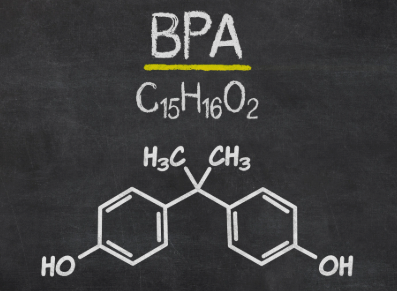
Is BPA Harmful?
Scientific studies have linked BPA exposure to various health issues, including hormonal disruption, reproductive problems, and an increased risk of heart disease and obesity. Since BPA mimics estrogen, it can interfere with the body’s endocrine system, potentially leading to long-term health effects. This has led regulatory agencies worldwide to restrict its use in food and beverage containers.
Why Are BPA-Free Water Bottles in High Demand?
With rising consumer awareness of BPA-related health risks, the demand for BPA-free water bottles has grown significantly. Many brands and retailers now prioritize safe, non-toxic materials to meet both regulatory requirements and customer expectations. Offering BPA-free water bottles not only ensures compliance with safety standards but also enhances a brand’s reputation and market competitiveness.
At Haers, we specialize in manufacturing BPA-free water bottles that meet international safety standards. Whether you are a buyer, gift merchant, or brand retailer, we provide a range of high-quality, safe, and eco-friendly drinkware options to help you meet the growing market demand.
What Water Bottle Materials Are BPA-Free?
Selecting the right BPA-free water bottle material is crucial for businesses looking to provide safe and durable products. Below are the most common materials used in BPA-free water bottles, along with their benefits and ideal applications.

Stainless Steel (304 & 316 Food-Grade Stainless Steel)
Stainless steel is one of the safest and most durable materials for BPA-free water bottles. It is resistant to rust, does not leach harmful chemicals, and maintains beverage temperature for extended periods. This makes it a preferred choice for insulated bottles, corporate gifts, and premium reusable drinkware. Stainless steel bottles are also highly recyclable, adding to their environmental appeal.
Tritan™ Plastic
Tritan is an advanced BPA-free plastic developed as a safe alternative to traditional polycarbonate plastics by Eastman. It is lightweight, impact-resistant, and crystal-clear, offering the transparency of glass without the risk of breakage. Tritan bottles are dishwasher-safe and resistant to stains and odors, making them a popular choice for sports bottles, promotional drinkware, and children’s water bottles.
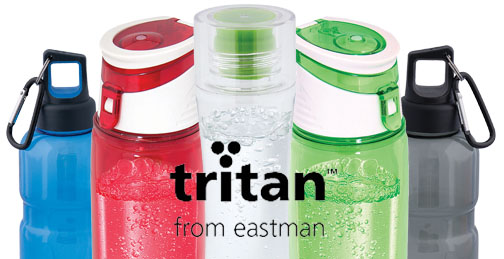
Glass
Glass is a natural BPA-free material that provides a clean, pure drinking experience. Unlike plastics, glass does not absorb flavors or odors, ensuring that beverages taste fresh. It is also one of the most environmentally friendly options, as it is 100% recyclable. However, glass bottles require extra care due to their fragility, making them ideal for premium or specialty drinkware.
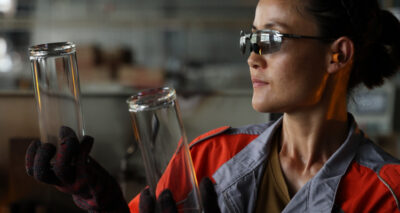
Food-Grade Silicone
Silicone is increasingly used in BPA-free collapsible water bottles and baby drinkware. It is heat-resistant, non-toxic, and flexible, making it a great option for portable and travel-friendly bottles. Silicone bottles can be folded for easy storage, which appeals to consumers looking for space-saving solutions.
Food-Grade PP (Polypropylene, #5 Plastic)
Polypropylene (PP) is a lightweight and cost-effective BPA-free plastic widely used in water bottle lids and some bottle bodies. It is resistant to heat and does not leach harmful chemicals, making it safe for food and beverage applications. PP is a practical choice for affordable water bottles and everyday drinkware.
By understanding these material options, buyers and brand retailers can make informed decisions when selecting BPA-free water bottles for their customers. In the next section, we will discuss how to identify truly BPA-free products and which materials to avoid.
How to Know If a Water Bottle Is BPA-Free?
Ensuring that a water bottle is BPA-free is essential for buyers and wholesalers selecting safe products for their customers. One of the most effective ways to determine whether a plastic water bottle contains BPA is by checking the recycling code imprinted on the bottom of the bottle.
Check the Recycling Code on Plastic Bottles
Plastic bottles feature a triangular recycling symbol with a number that indicates the type of plastic used. #5 (PP – Polypropylene) and Tritan are generally considered BPA-free materials. Polypropylene (#5) is commonly used for food and beverage containers due to its heat resistance and durability. Tritan, a specialized plastic classified under #7, is designed to be completely BPA-free, offering a strong and lightweight alternative to traditional plastics.
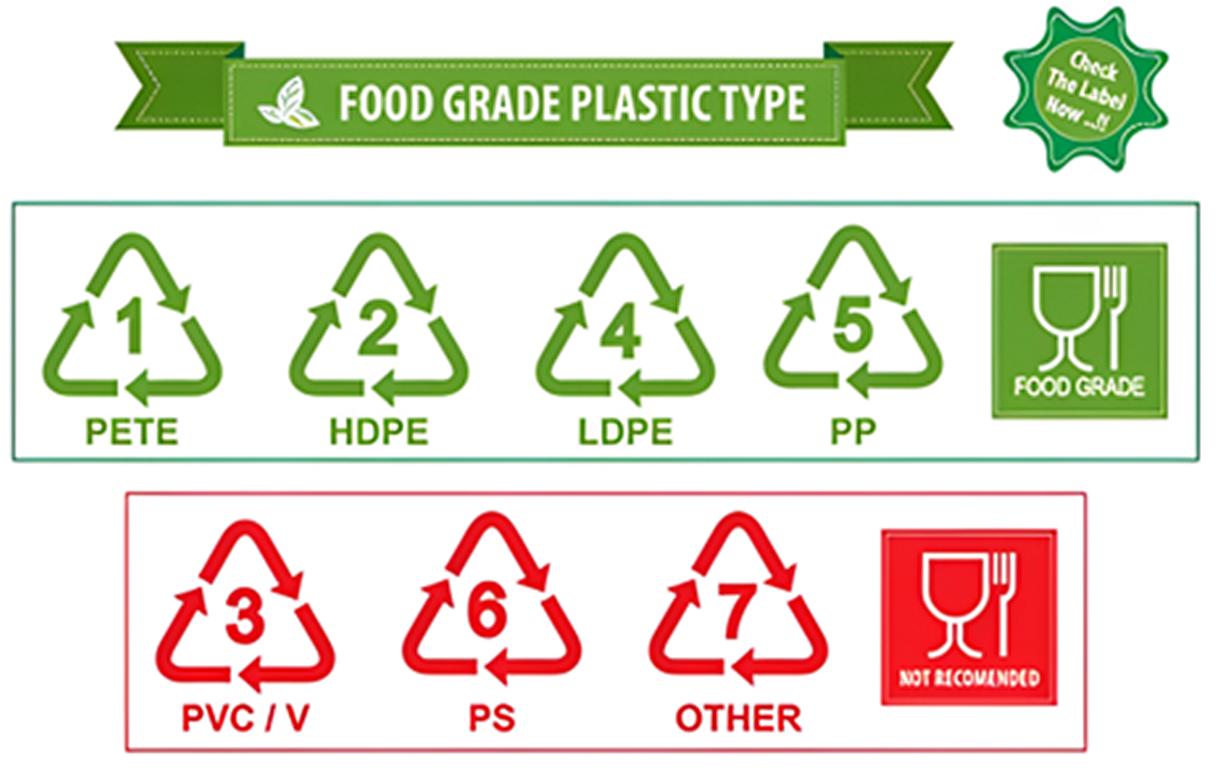
However, certain plastics should be avoided due to the potential presence of BPA. #3 (PVC – Polyvinyl Chloride) and #7 (PC – Polycarbonate) may contain BPA and are not recommended for water bottles. Polycarbonate (#7), in particular, is known to leach BPA into liquids, especially when exposed to heat or acidic beverages. Unless explicitly labeled as BPA-free, bottles made from these materials pose potential health risks and should not be used for food and beverage storage.
Verify Product Packaging and Certifications
When purchasing water bottles, it is important to check the packaging for BPA-free labels or official certifications. Manufacturers that use BPA-free materials will typically indicate this clearly on their products. The label “BPA-Free” ensures that the bottle does not contain bisphenol A, making it a safer choice for consumers.
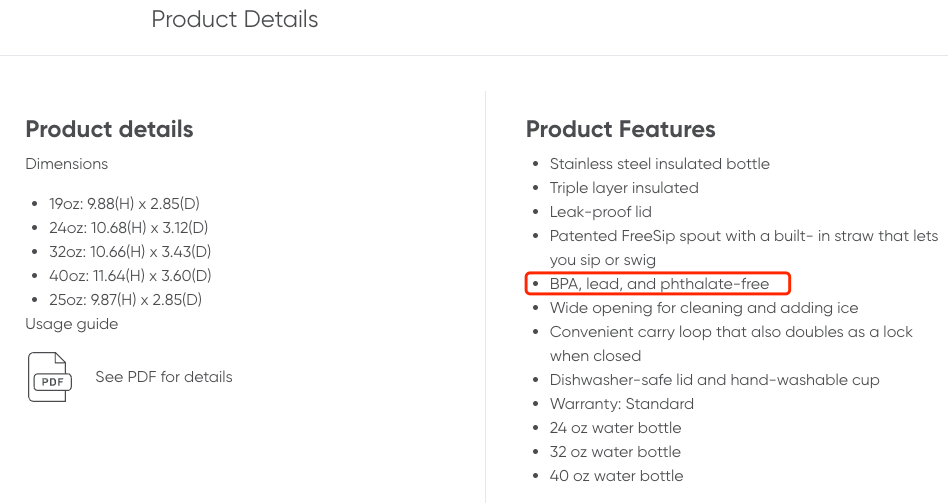
Additionally, recognized regulatory certifications provide further verification of material safety. Certifications such as FDA (U.S. Food and Drug Administration), LFGB (German Food and Commodities Law), and SGS Testing confirm that the materials used meet international food safety standards. These certifications indicate that the water bottle has undergone testing to ensure it does not contain harmful chemicals.
Choose Reliable BPA-Free Materials
Opting for BPA-free materials ensures the safety and durability of water bottles. Glass, food-grade stainless steel, Tritan, and food-grade silicone are the preferred choices for manufacturers producing safe and high-quality drinkware.
Glass is a natural and completely BPA-free material that does not absorb odors or flavors. It provides a clean and pure drinking experience. Stainless steel, particularly 304 and 316 food-grade stainless steel, is widely used for insulated water bottles due to its corrosion resistance and non-toxic properties. Tritan plastic is a strong and impact-resistant material that serves as a BPA-free alternative to polycarbonate. Food-grade silicone is another safe option, often used for collapsible and flexible water bottles.
Avoid Low-Quality Plastics from Unverified Sources
Some low-cost plastic bottles may still contain BPA, particularly those made from recycled or unverified materials. Bottles without clear labeling or certification should be approached with caution, as they may not meet safety standards. The use of unregulated plastics increases the risk of chemical leaching, especially when exposed to heat or prolonged use.
To ensure the safety and compliance of water bottles, buyers should prioritize products made from certified BPA-free materials and sourced from reputable manufacturers.
Which Materials Contain BPA?
When selecting water bottles for wholesale or corporate gifting, understanding which materials contain BPA is crucial. Certain plastics, particularly polycarbonate (PC), polyvinyl chloride (PVC), and some recycled plastics, are known to either contain BPA or have a high risk of contamination. Identifying and avoiding these materials ensures that products meet international safety standards and consumer expectations.
Polycarbonate (PC – #7 Plastic)
Polycarbonate (PC), classified under recycling code #7, is a clear, durable, and heat-resistant plastic. Due to its high strength and impact resistance, PC was once widely used in manufacturing baby bottles, sports water bottles, and large water dispensers. However, PC plastics can release BPA, especially when exposed to heat, acidic liquids, or repeated use.
Scientific research has shown that BPA can leach from polycarbonate containers into beverages, particularly under extreme temperatures. This has led to increasing global restrictions on PC plastics in food and beverage applications. Many manufacturers have shifted to BPA-free alternatives such as Tritan plastic, which offers similar durability without the risk of chemical leaching.
While some PC plastics are now manufactured with reduced BPA content, they are still not the preferred choice for food and drinkware. Buyers should be cautious when sourcing water bottles made from #7 plastics unless they are explicitly labeled as BPA-free and backed by safety certifications.
Polyvinyl Chloride (PVC – #3 Plastic)
Polyvinyl chloride (PVC), classified under recycling code #3, is another material that may contain BPA or other potentially harmful plasticizers. PVC is known for its flexibility, durability, and affordability, making it a common material in industrial pipes, food packaging, and some low-cost plastic containers. However, the potential presence of BPA, phthalates, and other toxic additives makes PVC a poor choice for manufacturing high-quality, safe water bottles.
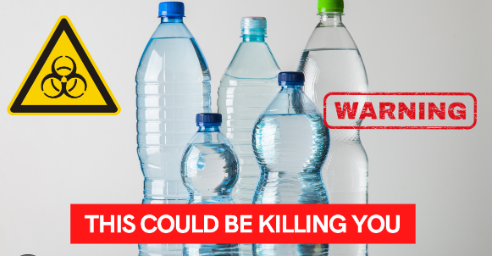
Unlike food-grade plastics such as polypropylene (PP) and Tritan, PVC is not naturally BPA-free and requires additional chemical stabilizers to enhance its properties. These additives can degrade over time, leading to potential contamination of the stored liquid. The health concerns associated with PVC have resulted in its declining use in consumer drinkware, with manufacturers and buyers favoring safer alternatives.
For businesses sourcing promotional or branded water bottles, it is advisable to avoid PVC-based products and instead opt for glass, stainless steel, or certified BPA-free plastics. These materials offer higher safety and compliance with global food-grade standards.
Some Recycled Plastics
Recycled plastics are widely used in various industries as part of eco-friendly manufacturing initiatives. However, not all recycled plastics are BPA-free, as their composition depends on the original plastic sources used in the recycling process.
Low-cost recycled plastic bottles, disposable water cups, and unregulated plastic containers may contain traces of BPA, phthalates, and other hazardous chemicals. The lack of transparency in the recycling process means that these plastics can be mixed with unknown materials, increasing the risk of chemical contamination.
While some high-quality recycled plastics undergo rigorous safety testing and are certified BPA-free, many low-cost options do not meet food-grade requirements. Buyers should exercise caution when sourcing recycled plastic water bottles, ensuring that they come from reputable manufacturers with verified material sourcing and safety compliance.
For businesses looking for sustainable water bottle options, the best approach is to choose BPA-free materials that are either naturally free of harmful chemicals or made from certified safe recycled plastics. This ensures both environmental responsibility and product safety, aligning with modern consumer expectations.
BPA-Free Materials in Haers
Haers employs only certified BPA-free materials to manufacture our high-quality water bottles, meeting the rigorous demands of international buyers and trade partners. We use food-grade stainless steel (304 and 316) extensively for insulated bottles, sports water bottles, and coffee cups. This material is chosen for its durability, excellent thermal retention, and resistance to corrosion, ensuring that every product maintains both safety and performance.
In addition, Haers has established a strategic cooperation agreement with Eastman for the supply of Eastman Tritan. This collaboration guarantees that our Tritan plastic, used primarily in sports and children’s water bottles, meets strict quality standards. Eastman Tritan is recognized for its clarity, lightweight properties, and robust impact resistance, all while being completely BPA-free.
For glass water bottles, we utilize borosilicate glass water bottles. This material offers superior thermal stability and chemical resistance, making it an ideal choice for maintaining the desired temperature while ensuring safety. Furthermore, food-grade polypropylene (PP) and silicone are used in the production of bottle lids, accessories, and straws. These materials are carefully selected for their non-toxic nature and ability to meet international safety standards, ensuring that every component of our water bottles is safe for everyday use.
Haers ensures BPA-free status by rigorously screening all raw materials. We adhere to international safety standards, with all plastic components meeting the criteria set by FDA, LFGB, and SGS certifications. During the production process, strict control measures are implemented to completely eliminate any possibility of BPA contamination, thereby safeguarding user health and maintaining the integrity of our products.

